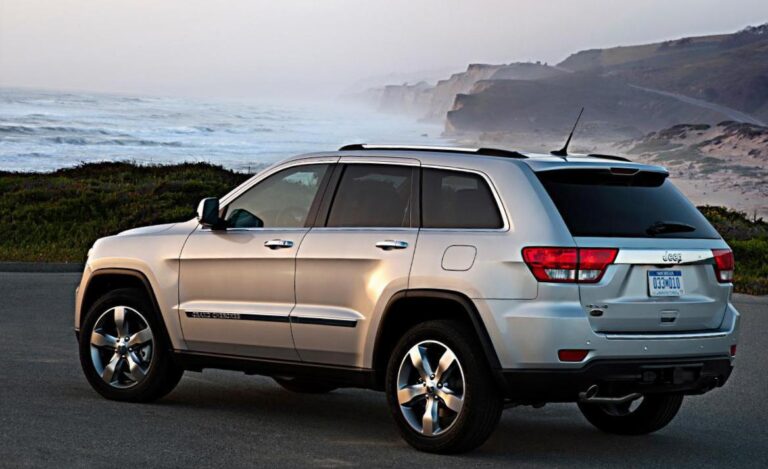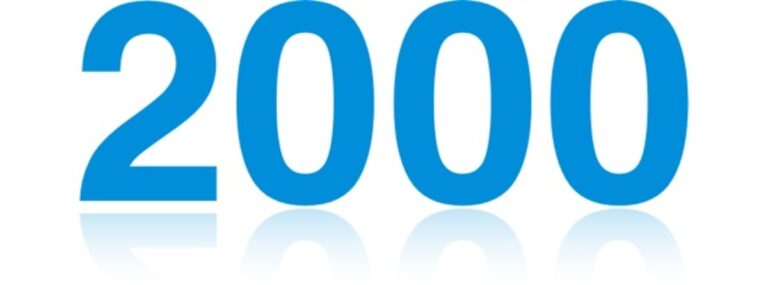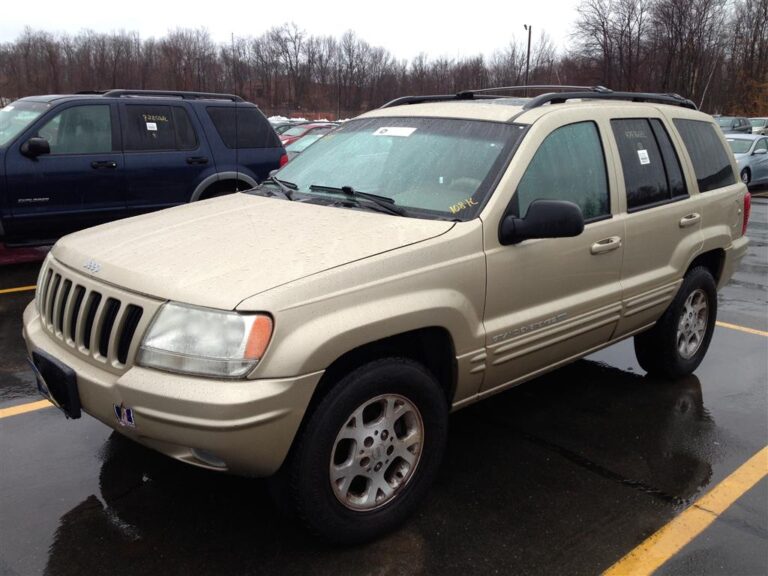2013 Jeep Wrangler Wheels And Tires For Sale: A Comprehensive Guide
2013 Jeep Wrangler Wheels And Tires For Sale: A Comprehensive Guide /jeeps.truckstrend.com
The 2013 Jeep Wrangler, a vehicle synonymous with rugged adventure and unparalleled off-road capability, remains a highly sought-after model. Central to its iconic performance and distinct aesthetic are its wheels and tires. Whether you’re looking to upgrade, replace worn-out components, or simply enhance your Wrangler’s look, navigating the market for 2013 Jeep Wrangler wheels and tires for sale requires careful consideration. This comprehensive guide will equip you with the knowledge needed to make informed decisions, ensuring your 2013 Wrangler continues to conquer any terrain with confidence and style.
The right set of wheels and tires can dramatically transform your Jeep’s performance, handling, and appearance. From optimizing grip on challenging trails to ensuring a smooth ride on pavement, and from achieving that aggressive stance to maintaining fuel efficiency, every aspect hinges on these critical components. Understanding the nuances of size, type, condition, and compatibility is paramount, especially when exploring the robust aftermarket and used parts landscape.
2013 Jeep Wrangler Wheels And Tires For Sale: A Comprehensive Guide
Understanding Your 2013 Jeep Wrangler’s Wheel and Tire Needs
Before diving into the market, it’s crucial to understand the baseline specifications and what your specific driving habits demand. The 2013 Jeep Wrangler (JK generation) typically came with 16-inch, 17-inch, or 18-inch wheels from the factory, depending on the trim level (Sport, Sahara, Rubicon).
Key Stock Specifications:
- Bolt Pattern: All 2007-2018 Jeep Wranglers (JK) use a 5×5 inch (or 5x127mm) bolt pattern. This is a non-negotiable compatibility factor for any wheels you consider.
- Center Bore: 71.5mm. While not as critical as bolt pattern, ensuring a proper fit to the hub minimizes vibration.
- Stock Wheel Sizes: Commonly 16×7", 17×7.5", or 18×7.5" with various offsets/backspacing.
- Stock Tire Sizes: Typically in the range of 29-32 inches in diameter, such as P225/75R16, P255/75R17, or P255/70R18.

Factors Influencing Your Choice:
- Driving Habits:
- Daily Driver (primarily pavement): Focus on Highway-Terrain (H/T) or All-Terrain (A/T) tires for comfort, quietness, and longevity. Stock or slightly larger wheels are usually sufficient.
- Weekend Warrior (light to moderate off-roading): All-Terrain (A/T) or Hybrid-Terrain (R/T) tires offer a good balance. Larger tires (e.g., 33-inch) might require a small lift.
- Dedicated Off-Roader (rock crawling, mudding): Mud-Terrain (M/T) tires are essential for maximum grip. Larger tires (35-inch+) will necessitate significant lift kits, fender modifications, and potentially axle upgrades.

- Lift Kit Status: If your Wrangler already has a lift, you can accommodate larger tires. Ensure your wheel and tire combination matches your lift height to prevent rubbing.
- Budget: This will significantly influence whether you opt for new or used, and the brands you consider.

Types of Wheels for Your 2013 Jeep Wrangler
Wheels aren’t just about looks; they contribute to strength, weight, and proper fitment.
- Material:
- Steel Wheels: Economical, very durable, often preferred for serious off-roading due to their ability to bend rather than crack (and thus be hammered back into shape). They are heavier, which can impact fuel economy and unsprung weight.
- Alloy Wheels (Aluminum): Lighter than steel, improving fuel efficiency and handling. They offer a wider range of designs and finishes. However, they are more prone to cracking or shattering under severe impact, making repairs more challenging. Most OEM wheels are alloy.
- Design/Style:
- OEM (Original Equipment Manufacturer): These are the wheels that came with the Jeep from the factory. They are reliable and ensure perfect fitment.
- Aftermarket Wheels: A vast array of designs, from classic five-spoke to aggressive modular and beadlock-capable wheels.
- Modular Wheels: Often steel, with a simple, rugged look.
- Spoke Wheels: Common in alloy, offering various spoke counts and patterns.
- Beadlock-Capable Wheels: Designed for extreme off-roading, allowing tires to be run at very low pressures without coming off the bead. True beadlocks are typically illegal for street use, so "beadlock-capable" or "simulated beadlock" wheels are common for street-legal aesthetics.
- Size (Diameter & Width):
- Diameter (e.g., 17", 18"): Larger diameters typically mean lower profile tires, which can be less comfortable off-road but offer better road handling. Smaller diameters (e.g., 15", 16") allow for more sidewall, crucial for airing down on trails and absorbing impacts.
- Width (e.g., 8", 9"): Must be compatible with your chosen tire width. A wider wheel generally accommodates a wider tire.
- Backspacing and Offset: These are critical for fitment and preventing rubbing.
- Offset: The distance from the wheel’s mounting surface to the centerline of the wheel.
- Positive Offset: The mounting surface is closer to the outside of the wheel, pulling the wheel inward.
- Negative Offset: The mounting surface is closer to the inside of the wheel, pushing the wheel outward.
- Backspacing: The distance from the mounting surface to the inner edge of the wheel.
- A lower backspacing number (e.g., 3.5"-4.5") pushes the wheels further out, providing a wider stance and allowing clearance for larger tires on lifted Jeeps. Stock Wranglers have higher backspacing (e.g., 6.25").
- Offset: The distance from the wheel’s mounting surface to the centerline of the wheel.
Types of Tires for Your 2013 Jeep Wrangler
Tires are your Jeep’s direct contact with the ground, and choosing the right type is paramount for performance and safety.
- Tire Categories:
- Highway-Terrain (H/T): Designed for quiet, comfortable road driving, good fuel economy, and long tread life. Limited off-road capability.
- All-Terrain (A/T): The most popular choice for Wranglers, offering a balance of on-road manners and respectable off-road grip. Versatile for various conditions.
- Rugged-Terrain (R/T) / Hybrid-Terrain: A newer category bridging A/T and M/T. More aggressive than A/T but less noisy and better mannered on pavement than full M/T tires.
- Mud-Terrain (M/T): Characterized by large, aggressive tread blocks and deep voids for maximum traction in mud, rocks, and loose terrain. They are typically louder on pavement and wear faster.
- Tire Size (e.g., 33", 35", 37"):
- Expressed in inches for overall diameter (e.g., 33×12.50R17).
- Larger tires offer more ground clearance and a bigger contact patch but require more power, affect gearing, and necessitate suspension modifications (lift kits).
- 33-inch tires: Often fit with a 2-2.5 inch lift.
- 35-inch tires: Typically require a 2.5-3.5 inch lift and potentially flat fenders.
- 37-inch+ tires: Demand significant lifts, axle upgrades, and other modifications.
- Load Rating and Speed Rating:
- Load Rating: Indicates the maximum weight a tire can support. Crucial for safety, especially if you carry heavy loads or tow. Ensure it meets or exceeds your Wrangler’s requirements.
- Speed Rating: Indicates the maximum speed at which a tire can safely carry a load. For Wranglers, this is usually less critical than for sports cars, but still important.
- Tread Pattern and Siping: The design of the tread blocks and the small cuts (sipes) within them affect grip, water evacuation, and noise.
Where to Find 2013 Jeep Wrangler Wheels and Tires For Sale
The market for used and aftermarket Jeep parts is vibrant and diverse.
- Online Marketplaces:
- eBay: Huge selection, often from individuals or specialized sellers. Look for detailed descriptions and multiple photos.
- Craigslist/Facebook Marketplace: Great for local deals, allowing you to inspect items in person. Be wary of scams and always meet in a public place.
- Specialized Forums (e.g., JeepForum.com, JK-Forum.com): Dedicated "For Sale" sections where enthusiasts buy, sell, and trade. Excellent source for well-maintained parts.
- Dedicated Aftermarket Retailers (e.g., Quadratec, ExtremeTerrain, Northridge4x4): Primarily sell new items, but sometimes have clearance or open-box deals.
- Local Shops:
- Tire Shops/Off-Road Shops: Often have used "take-offs" (wheels and tires removed from new vehicles when owners upgrade) or used sets from customers.
- Salvage Yards/Auto Recyclers: Can be a treasure trove for OEM wheels at a low cost, but tire condition is often poor.
- Dealer Take-Offs: New Jeep owners often upgrade their wheels and tires immediately after purchase, selling their factory sets. These are usually in excellent condition.
Key Considerations When Buying Used Wheels and Tires
Purchasing used can save money, but it comes with risks. Thorough inspection is vital.
- For Wheels:
- Visual Inspection: Look for cracks (especially near spokes or lug holes), bends, significant curb rash, or signs of previous repair. Spin the wheel to check for wobbles.
- Corrosion: Check for excessive rust on steel wheels or pitting/flaking on alloy wheels, especially in the bead seating area.
- For Tires:
- Tread Depth: Use a tread depth gauge or the "penny test." Insert a penny into the deepest part of the tread with Lincoln’s head upside down. If you can see the top of his head, the tread is shallow (less than 2/32" and potentially unsafe/illegal). Aim for at least 6/32" for good life.
- Age of Tires (DOT Code): Every tire has a DOT code with a four-digit date code (WWYY – WeekWeekYearYear). For example, "2013" means the 20th week of 2013. Tires generally have a usable lifespan of 6-10 years, regardless of tread, due to rubber degradation (dry rot). Avoid tires older than 6 years.
- Uneven Wear: Cupping, feathering, or excessive wear on one side can indicate alignment issues, worn suspension components on the previous vehicle, or improper inflation. This wear can impact your Jeep’s handling.
- Sidewall Damage: Check for bulges, cuts, or cracks, which can lead to blowouts.
- Plugs/Patches: Ask about previous repairs. Professional patches are generally fine for punctures in the tread, but sidewall repairs are unsafe.
- Matching Sets: Ideally, buy a set of five (including a spare) that are identical in brand, model, and wear. This is crucial for proper tire rotation and drivetrain health, especially for 4×4 vehicles.
- Price Negotiation: Be prepared to negotiate, especially for used items. Research market prices for similar items in similar condition.
- Seller Reputation: Buy from reputable sellers. If possible, ask for the wheels and tires to be mounted and balanced before purchase to ensure they spin true.
Installation and Maintenance Tips
Once you’ve acquired your wheels and tires, proper installation and ongoing maintenance are key.
- Professional Installation: While some DIYers might tackle this, professional mounting and balancing are highly recommended. This ensures proper bead seating, accurate balancing (critical for preventing vibrations), and correct lug nut torque.
- Alignment: After installing new or different sized tires, a professional alignment is crucial. This corrects steering angles and ensures even tire wear, prolonging their life and improving handling.
- Tire Rotation: Follow your Jeep’s manual or a recommended rotation pattern (often every 5,000-7,500 miles). This distributes wear evenly across all tires.
- Proper Inflation: Maintain the correct tire pressure as specified by the tire manufacturer (not necessarily your Jeep’s door jamb sticker, especially for aftermarket sizes). Use a reliable tire pressure gauge.
- Cleaning and Protection: Regularly clean your wheels and tires to prevent brake dust buildup and protect the rubber from UV damage using appropriate tire dressings.
2013 Jeep Wrangler Wheels And Tires For Sale: Estimated Price Guide
Please note: These are estimated price ranges for used items and can vary significantly based on brand, condition, location, rarity, and seller. New prices will be considerably higher.
| Item Description | Condition (Used) | Estimated Price Range (USD) | Notes |
|---|---|---|---|
| OEM 16" Steel Wheel (Single) | Fair – Good | $50 – $100 | Base Sport models, often with some surface rust. |
| OEM 17" Alloy Wheel (Single) | Fair – Good | $75 – $150 | Sahara/Rubicon take-offs, minor curb rash possible. |
| OEM 18" Alloy Wheel (Single) | Fair – Good | $100 – $200 | Sahara/Altitude take-offs, potential for minor imperfections. |
| Aftermarket 17" Alloy Wheel (Single) | Good – Excellent | $120 – $250 | Popular brands (e.g., Pro Comp, Fuel, Method), depending on design and finish. |
| Used 33" All-Terrain Tire (Single) | 50-75% Tread Life | $70 – $150 | Reputable brands (BFG KO2, Falken Wildpeak A/T3W, Nitto Ridge Grappler). Age is critical. |
| Used 35" Mud-Terrain Tire (Single) | 40-60% Tread Life | $80 – $180 | Aggressive M/T tires (Goodyear MTR, Cooper STT Pro, Toyo Open Country M/T). Check sidewalls. |
| Set of 5 OEM 17" Wheels with Tires | Good Tread, Minor Wear | $400 – $800 | Common "take-off" sets from upgraded Wranglers. Best value for a complete stock replacement. |
| Set of 5 Aftermarket 17" Wheels w/ 33" A/T Tires | Good Tread, Minor Wear | $800 – $1500+ | Excellent upgrade package, value depends heavily on wheel/tire brands and condition. |
| Set of 5 Aftermarket 17" Wheels w/ 35" M/T Tires | Moderate Tread Wear | $1000 – $2000+ | For serious off-roaders; often comes from Jeeps with lift kits already installed. |
Frequently Asked Questions (FAQ)
Q1: What is the stock bolt pattern for a 2013 Jeep Wrangler?
A1: The 2013 Jeep Wrangler (JK generation) uses a 5×5 inch (or 5x127mm) bolt pattern.
Q2: Can I put 35-inch tires on a stock 2013 Jeep Wrangler without a lift?
A2: Generally, no. A 35-inch tire will rub significantly on fenders and suspension components without at least a 2.5-3.5 inch lift and potentially flat fenders. Some minor trimming might allow 33s on stock, but it’s not ideal.
Q3: How do I check the age of a used tire?
A3: Look for the DOT code on the tire’s sidewall. The last four digits represent the week and year of manufacture (e.g., "3518" means the 35th week of 2018). Avoid tires older than 6-8 years, regardless of tread depth.
Q4: What is backspacing, and why is it important for my Wrangler?
A4: Backspacing is the distance from the wheel’s mounting surface to its inner edge. It’s crucial because it determines how far the wheel/tire assembly sits relative to the vehicle’s frame and suspension components. A lower backspacing number (e.g., 3.5"-4.5") pushes the wheels further out, providing clearance for larger tires and a wider stance, which is often necessary when upgrading to bigger tires on a lifted Wrangler.
Q5: Is it better to buy new or used wheels and tires for my 2013 Wrangler?
A5: It depends on your budget and needs. New offers peace of mind with warranties and no wear, but costs more. Used can save significant money but requires careful inspection for damage, age, and wear. For a daily driver or budget build, good used "take-offs" can be an excellent value. For serious off-roading or long-term investment, new is often preferred.
Q6: Do I need a full set of five (including the spare) when buying new tires?
A6: Yes, it’s highly recommended, especially for 4×4 vehicles like the Wrangler. Having a matching fifth tire allows for a proper 5-tire rotation, which evens out wear, extends the life of all tires, and ensures that all four tires on the ground have similar wear for optimal performance of the 4WD system.
Conclusion
Finding the perfect set of wheels and tires for your 2013 Jeep Wrangler is a journey that blends practicality with passion. By understanding your Jeep’s specifications, your driving needs, and the nuances of wheel and tire types, you can navigate the market with confidence. Whether you opt for a budget-friendly used set or invest in premium aftermarket upgrades, the right choice will not only enhance your Wrangler’s performance and appearance but also ensure countless more miles of adventure. Prioritize safety, conduct thorough inspections, and don’t hesitate to seek professional advice to make the best decision for your iconic 2013 Jeep Wrangler.




